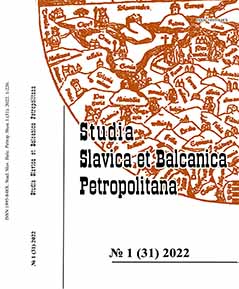Importance of dynastic and political ties for cross–cultural connections of Nemanide Serbia with the Mediterranean World and Central Europe around the First Fall of Constantinople, and its reflections on visual culture of Nemanide Serbia
Importance of dynastic and political ties for cross–cultural connections of Nemanide Serbia with the Mediterranean World and Central Europe around the First Fall of Constantinople, and its reflections on visual culture of Nemanide Serbia
Author(s): Nikola PiperskiSubject(s): History, Diplomatic history, Ethnohistory, Local History / Microhistory, Middle Ages, Culture and social structure
Published by: Издательство Исторического факультета СПбГУ
Keywords: political ties; dynastic ties; Nemanide dynasty; visual culture; Studenica Monastery; Balkans; Mediterranean; Central Europe; Byzantium; art; cultural studies; medieval studies;
Summary/Abstract: The aim of this text is to draw attention to importance of dynastic ties of the members of Serbian Nemanide dynasty with the Byzantine, Venetian and Hungarian ruling dynasties to cross-cultural connection between medieval Serbia and The Balkans with Mediterranean and Central Europe, and its reflection on visual culture. Special attention will be focused on the period around the first fall of Constantinople, which directly affected on political and dynastic relations of the Nemanide with the ruling and noble families of Byzantium, Hungary and Venice. A unique phenomenon in the visual culture of the Balkans of the period is Stephen Nemanja’s major foundation in Serbia ― Studenica monastery, with its katholikon church dedicated to the feast of the Dormition of the Virgin. This landmark monument of Nemanide Serbia founded, built and decorated with frescoes in the years immediately before and after the first fall of Constantinople is possibly the best example of how the political and dynastic connections of the time reflected on visual culture. It is only the initial step of broader study intended to reassess the visual culture of Nemanide Serbia and The Balkans in view of the concept of premodern globalization characterized by and resulting from a transfer of knowledge, technological change and homogenization of spatial and technological particularities, by the concept of common culture and particular individual and collective identities. Importance of dynastic ties in cross-cultural interaction of medieval Serbia, with Mediterranean world and Central Europe opens a new perspective on the general nature of visual culture of this period. It appears that from this perspective we could better perceive the power and creative life of imagery and visual culture in general in this period as an essential element of an awareness of living in the present and looking towards a future.
Journal: Петербургские славянские и балканские исследования
- Issue Year: 2022
- Issue No: 1(31)
- Page Range: 58-70
- Page Count: 13
- Language: English

